Rewilding: An Introduction
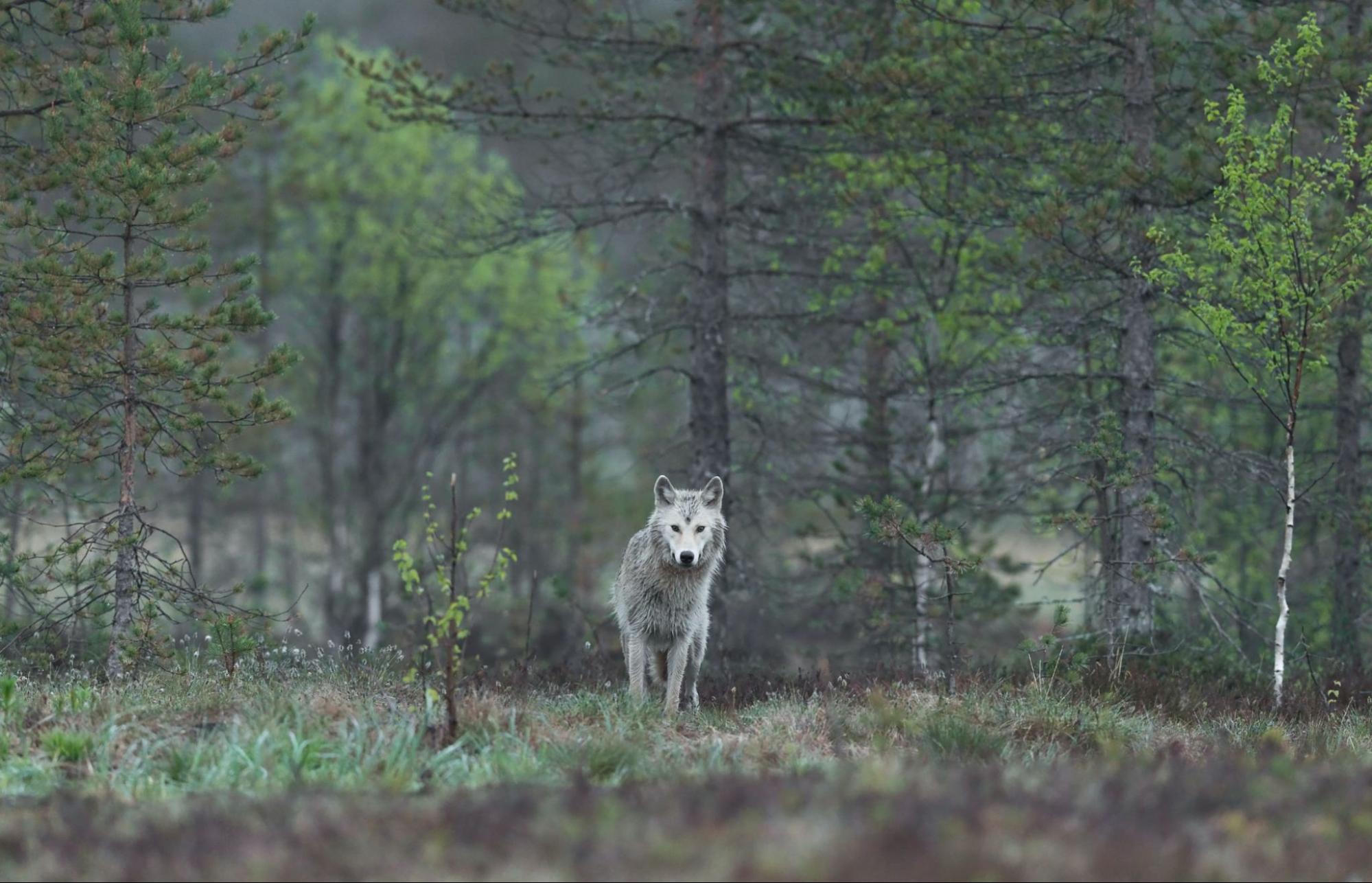
A lot has changed in Yellowstone Park in the past twenty-five years. Healthy stands of willow trees line the banks of streams. Songbirds sing from tree branches. Beaver dams made of willow dot the streams. If you’re lucky, you can spot a beaver slapping its tail on the surface of the water. Twenty-five years ago, it would’ve been difficult to find any of these species. What changed? And what made this healthy ecosystem possible? In one word: wolves.
Before the 1900s, wolf packs roamed across the United States. But by the early 20th century, wolf populations declined due to habitat loss and hunting programs. In 1973, the government, scientists, and conservation groups took steps to restore these dwindling wolf populations. The Fish and Wildlife Service listed the wolf as an endangered species and made Greater Yellowstone Ecosystem a recovery area. And twenty-five years ago, forty-one wolves were released in Yellowstone. Many species that had disappeared after the wolf populations declined, such as the songbirds and beavers, began to reappear.
Before the reintroduction of wolves, Yellowstone elk numbers had exploded. Without wolves to hunt the elk population, the elk could overgraze on willow, aspen, and cottonwood plants. Willows, however, are important to beavers who use it to build their dams. As elk populations grew and overgrazed the streambanks, crucial plant species disappeared, which caused the further disappearance of beaver populations. Once wolves were reintroduced to Yellowstone and could help control elk population size, plant and animal species returned.
The wolf reintroduction program had a goal not only to restore wolf populations, but also the health of the Yellowstone ecosystem as a whole. This conservation concept of reintroducing species into a landscape to help restore ecosystem health is called rewilding. As ecosystems around the world suffer on the verge of collapse, rewilding could be a method to help save the planet’s biodiversity—and in turn, ourselves.
Breaking Down the Concept of Rewilding

Rewilding was first defined by conservation biologist Dave Foreman in an issue of Wild Earth in the Fall of 1992. A few years later, two American conservation biologists named Michael Soulé and Reed Noss built on the concept. In their now highly-referenced article from 1998, Soulé and Noss originally defined rewilding as a conservation effort that “emphasizes the restoration and protection of big wilderness and wide-ranging, large animals—particularly carnivores” (Soulé and Noss, 1998).
More specifically, rewilding is a conservation method that focuses on restoring biodiversity and ecosystem health by doing three things:
- Protecting core wilderness areas
- Connecting those areas with wildlife corridors [strips of undisturbed habitat that link one core area to another]; and
- Protecting and introducing keystone species species whose benefits to an ecosystem outweigh their population size
Since the late nineties, the method has been adopted globally. And the term itself has come to include a range of approaches:
- Translocation rewilding: includes the example of reintroducing wolves to Yellowstone Park. Translocation rewilding involves either reintroducing a species recently lost to local extinction, or releasing individuals to strengthen an existing population. Both measures seek to restore a balanced ecosystem across all species interactions.
- Passive rewilding: lets nature take its course. Humans step back from the landscape and let nature heal itself without human interference.
- Pleistocene rewilding: involves reintroducing species from the Pleistocene era—known as the Ice Age—which ended about 12,000 years ago. At the end of the Ice Age, many of the animals we associate with that time, such as mastodons, saber tooth tigers, and woolly mammoths, died off in a mass extinction. Biologists who support Pleistocene rewilding argue that the die off of these large animal species created an unbalanced ecosystem. They believe that by reintroducing these Pleistocene-era species through genetic modifications of current similar species (which we will discuss below) or introducing similar, existing species, ecosystems may be restored.
Rewilding Efforts from Around the World
We began with an example from Yellowstone Park in North America because it is a well-known example, but rewilding has been used to restore ecosystems around the world. These global efforts include all three rewilding approaches. Read some case studies below:
The United Kingdom

Copyright: Knepp Wildland
In brief: Knepp Estate. A pioneering, promising rewilding project in the United Kingdom that turned an aristocratic estate into a biodiversity sanctuary. Some of the rarest species in the United Kingdom, such as the purple emperor butterfly, reside here. An example of passive rewilding that offers hope for replication across other rewilding projects.
The rewilding movement has formed strong roots in the United Kingdom. A number of projects are happening across the UK. One famous example comes from southern England.
Knepp Estate is a 3,500 acre estate in West Sussex County in southern England. Since 2001, it has been a pioneer in the United Kingdom’s rewilding efforts. For over 200 years, the estate was used for dairy farming. Much of the land was cleared for pasture, which prevented wildlife species from living there.
In 2001, however, the estate became a rewilding project. The land was encouraged to heal itself with minimal human influence through the use of grazing animals. Unlike dairy cows, which emit methane gases that contribute to climate change and require clear-cut pastures, grazing herbivores, such as cattle, ponies, pigs, and deer, roam freely between forest and open spaces. As a side note, the difference between pasture-grazing dairy cows and free-range cattle is that, while both release methane, free-range cattle cancel out their negative impact on the climate by restoring habitat, as outlined below.
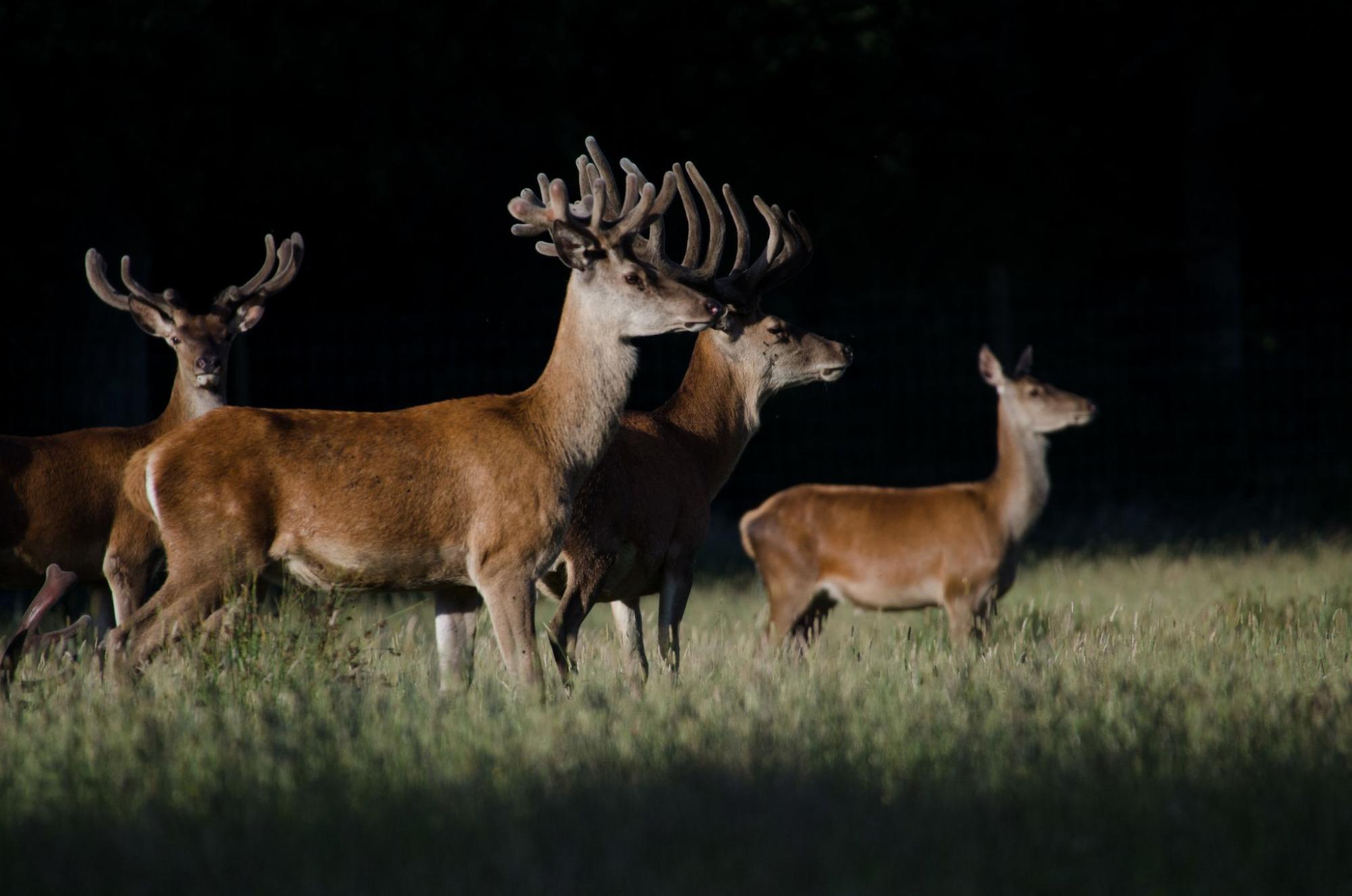
Copyright: Knepp Wildland
These free-roaming creatures can then lead to a whole chain of positive reactions across the landscape: by munching and trampling on scrub plants, grazing animals prevent forests from turning into densely-packed woodland. This dense woodland with brush and scrub prevents wild species from moving freely, foraging, and breeding—a poor habitat for wild species. Grazing animals can also disperse nutrients and seeds through their dung or carried on their fur. This helps distribute plant species across the landscape and allows for a richer mosaic, or array, of flora.
As a result of these grazing animals and letting nature heal on its own, the results at Knepp Estate have been positive. Many rare or endangered species have returned: turtle doves, nightingales, peregrine falcons, and purple emperor butterflies. Many of these rare or endangered species use Knepp Estate as a safe breeding ground—one of few in England. The Estate has a number of statistics to be proud of, boasting the largest population of purple emperor butterflies in the United Kingdom; the frequent appearance of one of the rarest birds in Western Europe: the black stork; and all five UK species of owls.
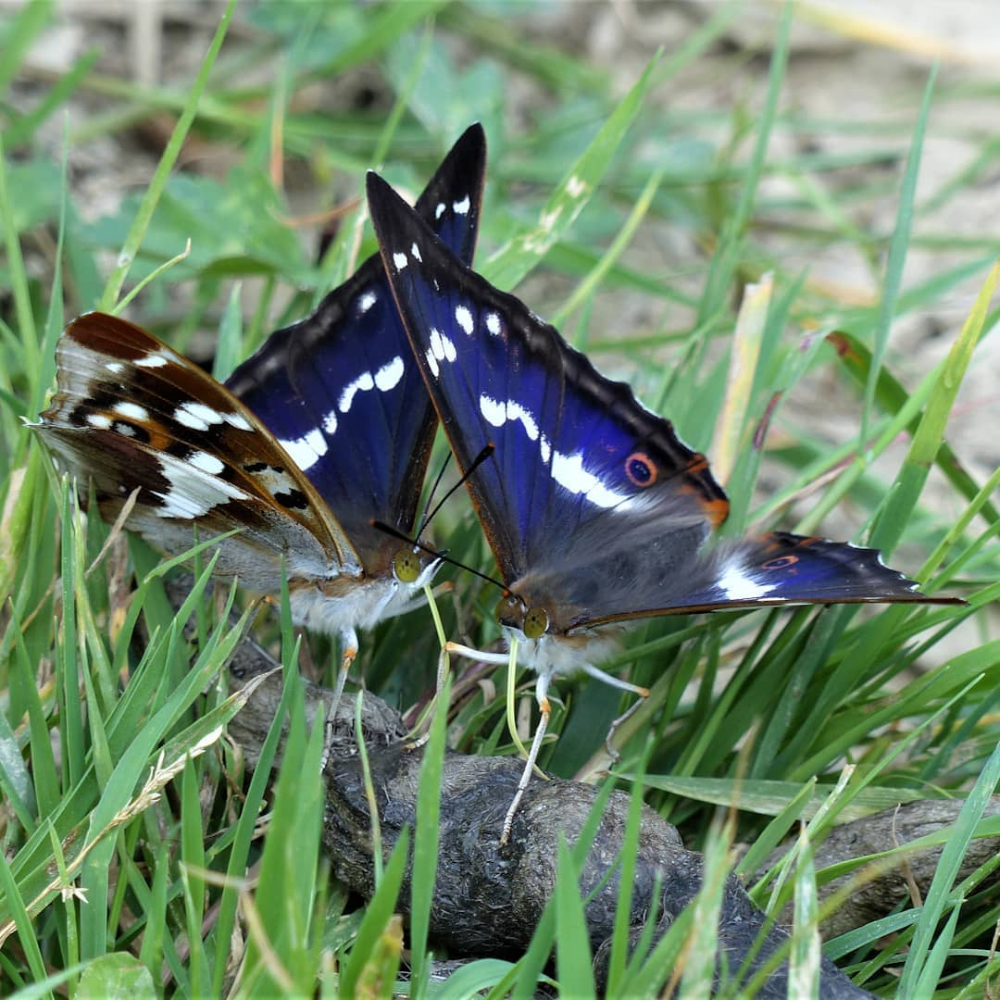
Copyright: Knepp Wildland
This haven for critically endangered or rare species is a promising step not only for the United Kingdom, but also for global rewilding efforts. As wild spaces and safe habitats become increasingly fragmented, places like Knepp Estate offer potential solutions and glimmers of hope. Having wildlife regions like Knepp Estate also becomes incredibly important if we hope to preserve our planet’s rich biodiversity.
However, Knepp Estate has recently faced some challenges. At the moment, Knepp Estate is an important wildlife corridor between neighboring St Leonard’s and Ashdown forests. This allows species to migrate safely between habitats. But potential housing developments of 3,500 new homes could turn Knepp Estate from a corridor into an island.
There is, of course, fierce opposition to this housing development project. It remains to be seen whether this flourishing rewilding project will be able to continue providing a safe haven for rare and endangered species in the United Kingdom.
Russia
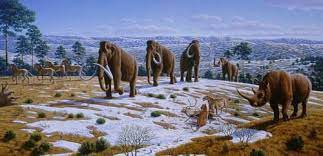
Copyright: Pleistocene Park
In brief: Pleistocene Park in Siberia. A famous example of Pleistocene rewilding. Not only seeks to rewild the Russian steppe, but also mitigate climate change in the process.
Siberia in Russia is famously known as a cold and isolated place. Many may know it as a region of exile in Russian history. It is less known, perhaps, as a rewilding park.
Pleistocene Park in Northern Siberia is a rewilding site. Run by the Zimov family—the elder Sergey Zimov and his son Nikita Zimov—since the late 1980s, the Park seeks to restore the mammoth steppe ecosystem; in other words, to restore the land to what it was when woolly mammoths roamed the land during the last Ice Age. How? And maybe more importantly, why?
Pleistocene Park is a prime example of Pleistocene rewilding: the reintroduction of species to bring back the balance of ecosystems that existed before human contact. The Park uses large grazing mammals, such as moose, musk ox, bison, horses, yaks, etc., to change the landscape. These herbivores prevent dark trees from growing and help grass species grow instead. As a result, grasslands similar to those during the Pleistocene era have spread across the Park. But why does this matter in the first place?
These grasslands are powerful players in the fight against climate change. First of all, permafrost, the thick layer of icy soil that stays frozen in cold places like Siberia, stores a lot of carbon. Warming temperatures from climate change, however, threaten to melt the permafrost. When this happens, permafrost turns formerly frozen organic matter into greenhouse gases.
Grazing mammals can change all of that. When they graze on the grasses in the winter, the herbivores trample down the snow. In turn, the snow acts as a protective layer over the permafrost to prevent it from melting and releasing greenhouse gases. Another reason why grasslands can help prevent climate change is their light color. Because grasslands are lighter than shrubs or trees, the surface reflects sunlight back into space, which keeps the Earth’s surface cool. This is called the albedo effect.
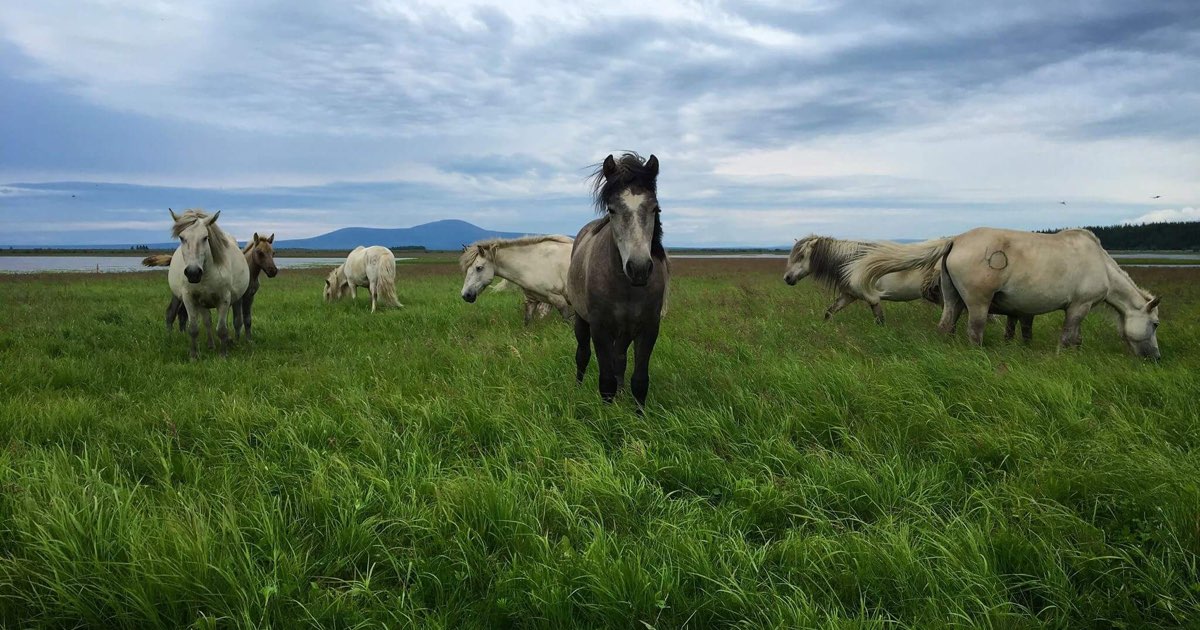
Copyright: Pleistocene Park
Finally, Pleistocene era grasses have a deep root system that can absorb more carbon from the atmosphere than most modern plant species. Grasslands like those in Pleistocene Park can act as powerful carbon storage sites as carbon emissions rise worldwide.
In addition to bringing back these grazing animals, Pleistocene Park is charging ahead with an even bolder plan: bring back the woolly mammoth. With help from the Church Lab at Harvard and the wildlife conservation organization Revive & Restore, the Zimovs hope to de-extinct the woolly mammoth. As very large herbivores, woolly mammoths can more effectively restore the Pleistocene grasslands.
Scientists are able to bring the woolly mammoth back by using technologies that can edit a species’ genes. In this case, scientists edit the genes of woolly mammoths’ closest living relative: the Asian elephant. By giving the Asian elephant woolly mammoth qualities such as hair, these altered elephants can live in the Arctic conditions of Pleistocene Park. These efforts to bring species back from the dead is called de-extinction.
There are, however, controversies attached to these efforts. Opponents question whether humans have the right to mess with the laws of nature. Opponents to the Pleistocene rewilding concept as a whole also argue that rewilding with exotic animals will not bring back the healthy ecosystems of the Pleistocene era. They say that landscapes have evolved too much since then to be able to go back. Additionally, opponents warn that Pleistocene rewilding could have too many unpredictable consequences that are not worth the risk.
Tanzania
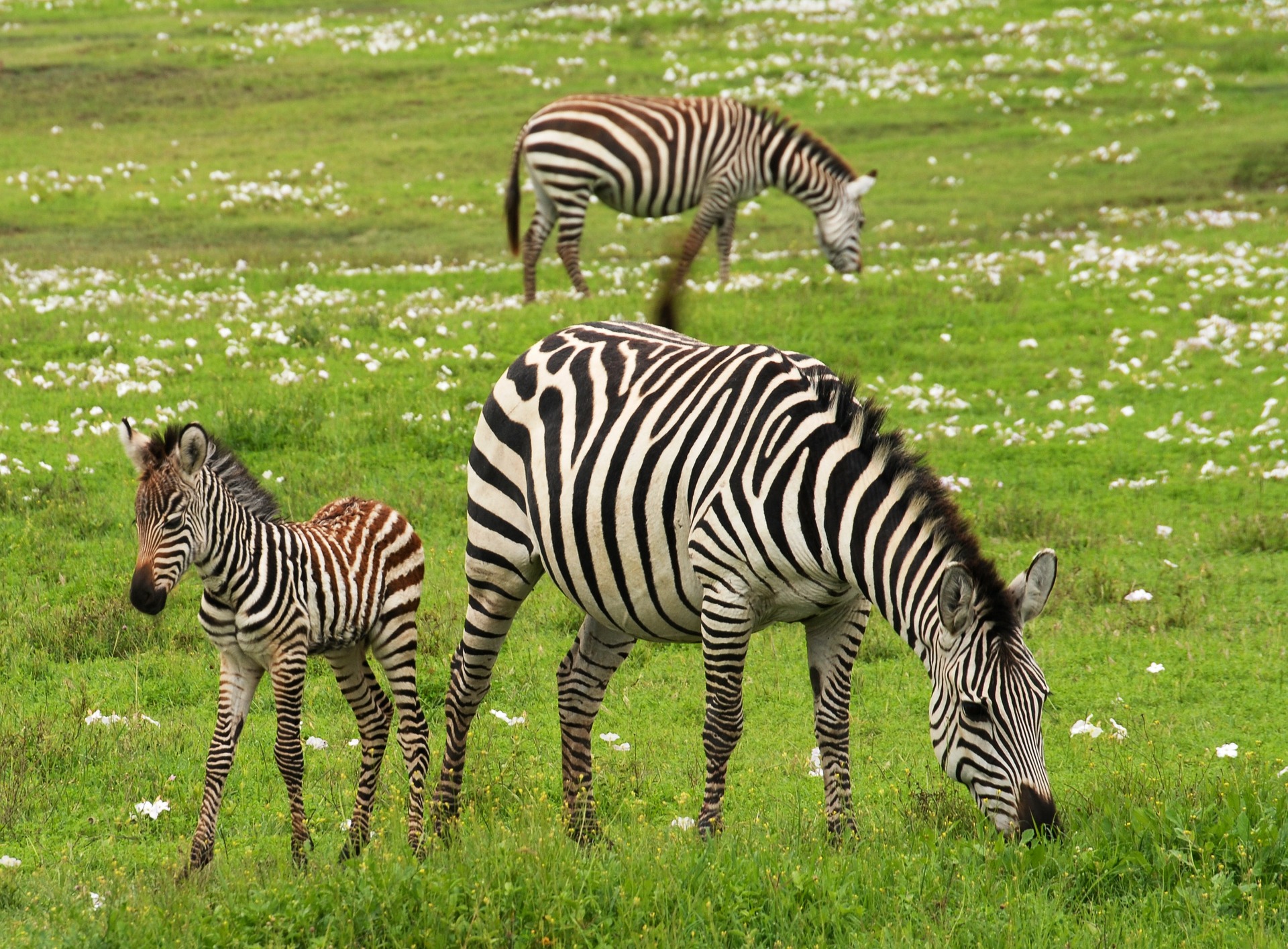
In brief: Tanzania’s Kitulo National Park. Translocation rewilding efforts to bring back some of the globe’s most iconic species: the zebra. An example of a holistic approach to rewilding efforts.
When you picture African grasslands, what animals do you imagine? Lions? Gazelle and antelope? Zebras? All of these vibrant animals are closely tied to the African landscape. But imagine if they disappeared.
This is what happened to zebras in Tanzania over fifty years ago. It is a familiar story that has repeated in places across the globe. Half a century ago, zebras were hunted to local extinction or removed to make room for ranches and farms.
In 2018, however, the Wildlife Conservation Society (WCS) in Tanzania reintroduced zebras into Tanzania’s Kitulo National Park in the Southern Highlands region. The reintroduced zebras included 16 adult/subadult females, six adult/subadult males, and two juvenile males.
The reintroduction of these zebras is a part of rewilding efforts in the region and an idea that began in the early 2000s with Dr. Tim Davenport, Director of the WCS Tanzania Program, who designed the reintroduction.
“It was thrilling to see the zebras moving across the plateau as they had for untold centuries. This collaboration proves that we can restore wildlife in once degraded landscapes—provided there is political will and good science behind these efforts,” Davenport said in a WCS press release.
The rewilding efforts in Tanzania’s Kitulo National Park don’t stop at zebras though. WCS has planted 4 million indigenous trees and takes care of the region’s rare montane, or mountainous, grasslands. These replanted trees serve as corridors for other animal species to pass safely from one habitat to another.
Like Knepp Estate, the rewilding efforts in Kitulo National Park prove that, as Dr. Davenport says, the restoration of degraded landscapes is possible. If after losing one of the most iconic animals in Tanzania—if not on the African continent—conservationists and activists can successfully restore them to their native habitat, then it is also possible in other degraded landscapes.
With rewilding efforts at Kitulo National Park, Africa’s grasslands may once again be the site of numerous animal species—not just a place in our imagination.
New Zealand
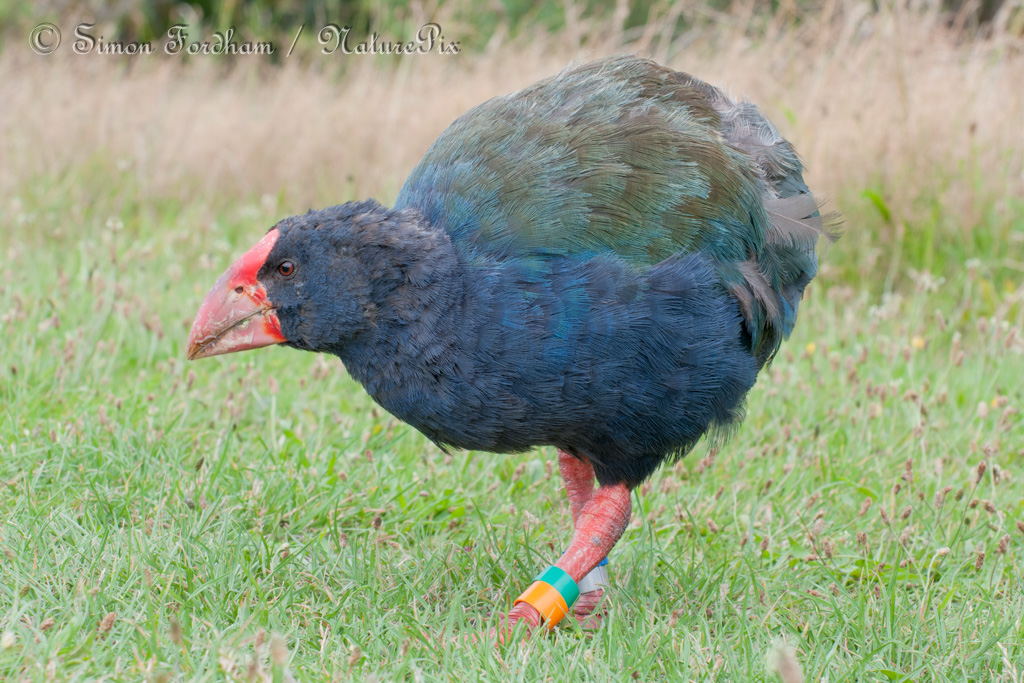
Copyright: Simon Fordham/NaturePix
In brief: Tiritiri Matangi Island in New Zealand. An island sanctuary for some of the nation’s most endangered birds. A blueprint for other rewilding projects and an example of united civilian and scientific efforts.
Tiritiri Matangi Island sits 30 kilometers east of central Auckland. This 220-hectare island is one of the most successful conservation rewilding projects in the world. Each year, it attracts more than 20,000 visitors. Visitors from all over the world come to see many rare species, such as the kōkako and takahē birds. But it wasn’t always a flourishing ecosystem.
Like many of the other rewilding stories we explored, the island experienced intense loss of vegetation. When European settlers arrived on the island in the mid 19th century, they cleared much of the land for farming. The Maori had been living on the island for 400 years prior, so the island had experienced some human contact. After European settlement, however, the island lost 94% of its native bush.
Between 1984 and 1994, a bold push for rewilding occurred. A group of volunteers planted 250,000 - 300,000 trees. This has led to the return of a healthy ecosystem. Now, sixty percent of the island is covered in native forest, and 40% in grassland. Birds, reptiles, and insects that might not find a home on the mainland have returned to the island.
Birds like the takahē, for example, find a safe home on the island, where they can forage and breed. With only around 200 birds left in the total population, the island provides a sanctuary for these rare birds and prevents the species from disappearing completely.
In addition to the tree planting efforts in the 80s and 90s, another reason why rewilding efforts have been successful on the island is the removal of unwanted or invasive predators. These predators, such as house cats, rats, and possums, were introduced to the island when European settlers arrived and caused native bird populations to fall. Their removal has helped bring back populations of native species.
This method of rewilding, however, does not always meet approval. Pest removals in New Zealand have involved use of poisons, which critics argue are harmful to all animals, including native species. These efforts are part of the New Zealand government’s goal of being predator free by 2050. While there is some pushback to the methods involved in this effort, however, there is overall support for this nationwide rewilding project.
These rewilding efforts on Tiritiri Matangi Island offer a blueprint for other sanctuary projects in New Zealand, as well as around the world, that hope to protect native species. Sanctuaries like Tiritiri Matangi Island provide crucial safe spaces that endangered or rare species in New Zealand wouldn’t otherwise be able to find.
These sanctuaries with healthy populations can even increase populations in other regions that may be suffering. By providing a healthy, breeding individual to another species population on another island with few individuals, for example, conservationists can strengthen populations elsewhere.
For these reasons, Tiritiri Matangi Island remains a crucial rewilding site that can help New Zealand restore its unique native species populations.
Patagonia | Chile and Argentina
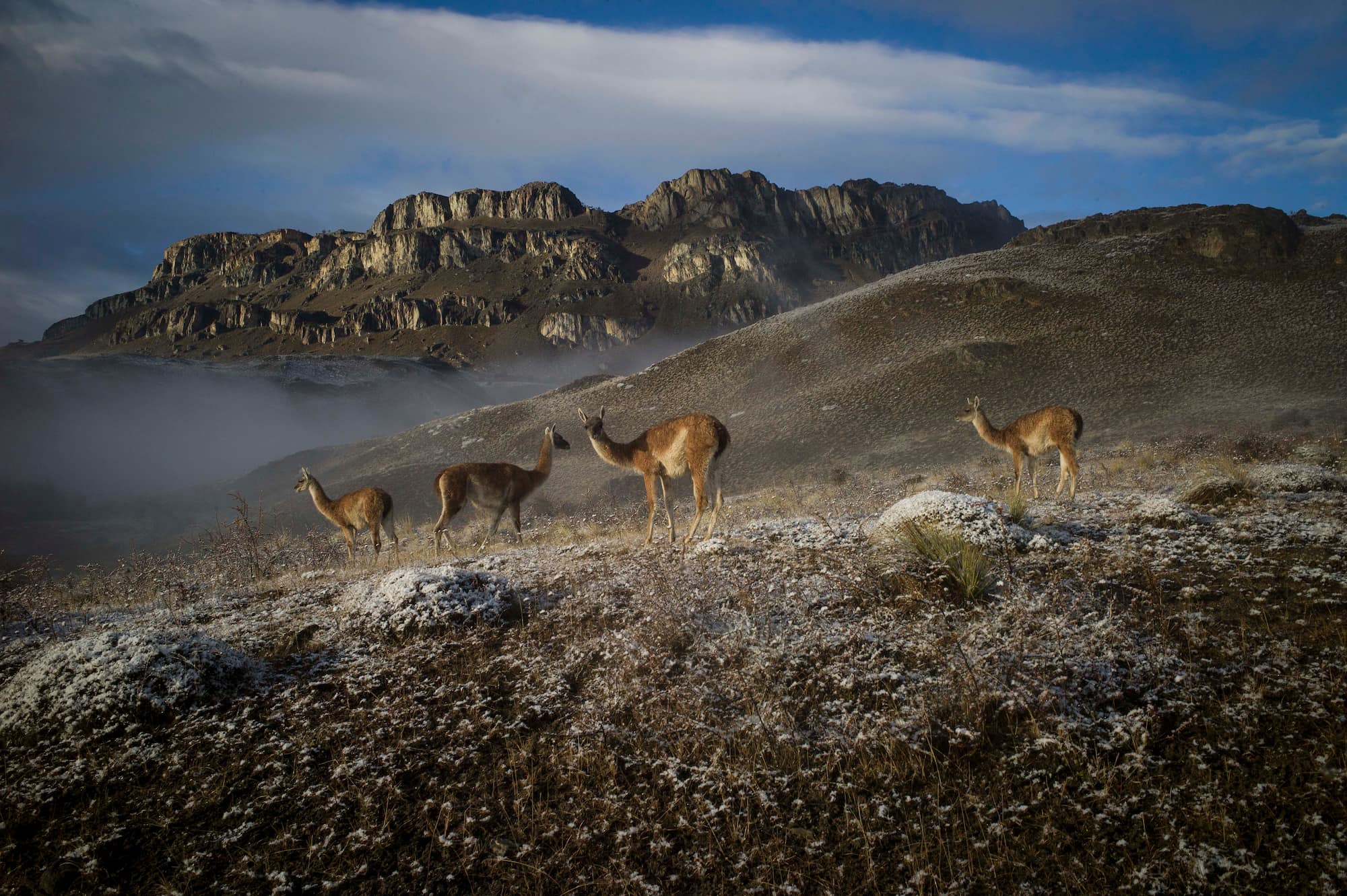
Copyright: Tompkins Conservation
In brief: Tompkins Conservation purchased tracts of land in Chile and Argentina to turn into national parks. An example of rewilding philanthropy at the forefront of nature conservation efforts.
Since the 1990s, Doug and Kristine Tompkins have pretty much stood at the helm of global wildlands philanthropy. Kristine Tompkins, Former CEO of the clothing brand Patagonia, and her late husband Doug Tompkins, clothing tycoon of The North Face and Esprit, have contributed to rewilding efforts in Argentina and Chile for a quarter century.
Together, they have contributed $170 million to rewilding projects in the Patagonian region, which stretches across Argentina and Chile. Their efforts have also raised around $45 million from philanthropists around the globe. Through the Tompkins Conservation and its partners, the Tompkins have helped protect 14 million acres of land and reintroduced many endangered species.
Their rewilding projects rest on two main principles: 1. Buy land to turn into national parks, and 2. Set up wildlife programs that reintroduce native species to these parks. Their vision has led to the return of endangered species such as the huemul deer, puma, Darwin’s rhea, Andean condor, and pampas cat in Chile, and giant anteaters, jaguars, and green-winged macaws in Argentina.
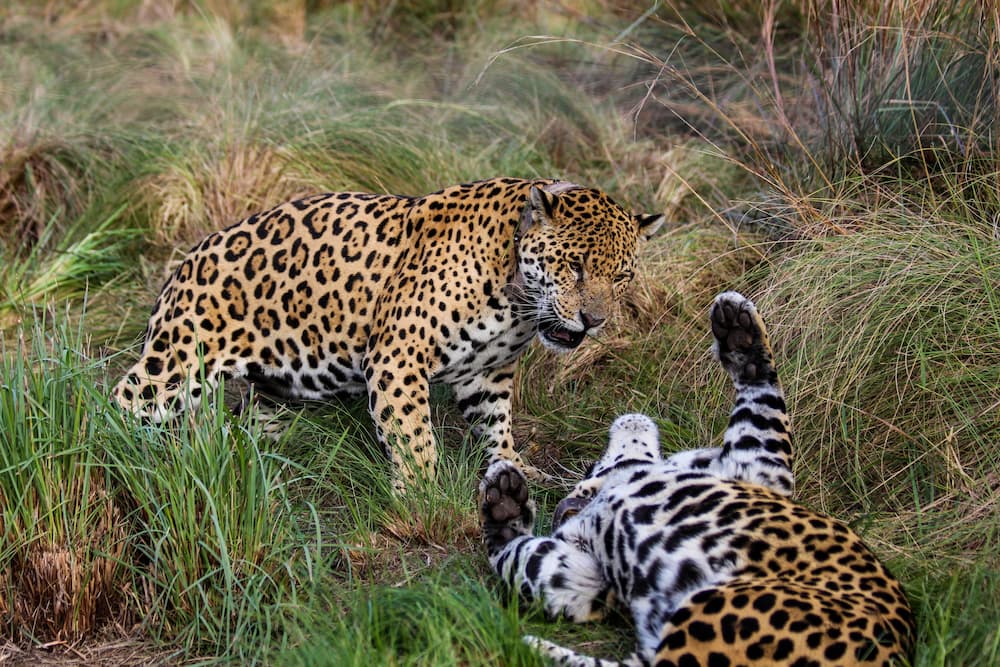
Copyright: Tompkins Conservation
Before his tragic and unexpected death in December 2015, Doug Tompkins had felt a sense of urgency in buying these vast tracts of land in Patagonia. His vision was to buy up as much land as possible in order to prevent the sixth mass extinction. Kris Tompkins has helped continue this vision even after Doug Tompkins’ death.
In 2018, for example, Kris Tompkins and then Chilean president Michelle Bachelet reached a ground-breaking agreement. The Tompkins Conservation would hand over 9 million acres of land to the Chilean government by April 2019. This agreement would put the land under the protection of the Chilean government and in turn, create five national parks and expand three. The Tompkins Conservation donations of fully-functioning national parks are the largest in the history of wildlands philanthropy.
The Tompkins’ projects were not always well-received, however. When the Tompkins were first buying up land in Chile, locals eyed them with suspicion. Here were two multi-millionaire foreigners purchasing huge amounts of land. Conspiracy theories started to fly.
Some theories proposed that the millionaires were going to use the land as a nuclear waste dump. Others thought the Tompkins were going to introduce American bison. Rumors and conspiracy theories aside, there were also many locals who were and continue to be opposed to the Tompkins’ rewilding efforts.
Local ranchers held a protest in 2013, afraid of livestock removal and attacks from newly introduced pumas. Many local ranchers see these national parks as a threat to a traditional way of life, and a valuing of wildlife over livestock.
Since Doug Tompkins’ death in 2015, however, public opinion has changed. Many Chilean and Argentinian citizens realized the sincerity of the Tompkins’ efforts. What at first seemed like a suspicious power move or cover up by wealthy Americans, is now seen as a project for public improvement to educate and inspire people on the beauty of Patagonia.
Over the last quarter century, the Tompkins Conservation has shown the power of philanthropy. In its own way, like Tiritiri Matangi Island, Pleistocene Park, or Knepp Estate, the Tompkins’ wildlands philanthropic project sets a blueprint for others to follow. Whether through private or public investment, or scientific inquiry, global rewilding efforts need all the tools in the shed.
Challenges and Controversies
As outlined briefly above, arguments for or against rewilding could go on for days. The case studies mentioned only scratch at the surface of rewilding challenges and controversies. Rewilding has many supporters and has had success worldwide, but there are also examples of failed attempts and many scientific, political, and ethical arguments against rewilding.
For some, the idea of wild animals roaming their backyards is not a welcome idea. While there is a range of attitudes towards wolves and their reintroduction, Yellowstone Park’s efforts have faced pushback from local landowners. These opponents worry about their personal safety, and for farmers and ranchers, they worry that wolves will kill their livestock.
To give another example from North America, some American scientists want to introduce Pleistocene rewilding to North America (like Pleistocene Park in Siberia). Others, however, argue that introducing large Pleistocene-era mammals to North America could reduce diversity of species or harm other environmental efforts in the Great Plains region, such as the return of buffalo herds to Native American reservation lands.
In addition to the controversies, some rewilding projects have faced dramatic challenges. Oostvaardersplassen in the Netherlands dealt with public anger in 2018. It is the site of a rewilding project that went wrong.
With few predators in the small 5,000 hectare reserve, the herbivore population exploded. But then came the winter of 2017-2018 which was much colder and more wet than usual. With such high numbers of animals in a small area of land with limited food resources during the winter, many animals starved to death. The population of red deer, horses, and cattle fell from 5,230 to 1,850. Almost 90% of the dead animals were shot by the Dutch state forestry organization, the Park’s managers, because they were starving.
Another important debate in the conservation community is the history and definition of rewilding and its connection to the concept of ‘wilderness.’ Kim Ward, in ‘For wilderness or wildness? Decolonising rewilding,’ argues that restoring wilderness and returning to a landscape before human contact is an idea that erases thousands of years of cultural history. The concept of rewilding to a state of ‘wilderness’--an idea of nature ‘untouched’ by humans--is one tied to white, patriarchal colonization because it removes the indigenous cultures that may have existed on that land for tens of thousands of years. Instead, rewilding efforts should focus on restoring ‘wildness’ and be sensitive ‘to existing cultural interpretations, social impacts, and indigenous livelihoods,’ writes Ward.
As with any environmental conservation method, rewilding requires careful planning and research. When we humans interfere in an ecosystem, we take on the risk of disturbing a complex web of interconnections. After centuries of disruption, however, rewilding offers one of many possible tools we can use to heal the planet.
Further Reading on Rewilding
Feral by George Monbiot
Rewild Yourself by Simon Barnes
Wilding: The Return of Nature to a British Farm by Isabella Tree
Rewilding North America: A Vision for Conservation in the 21st Century by Dave Foreman